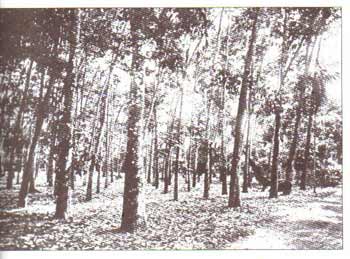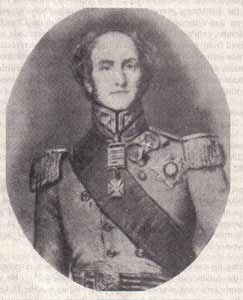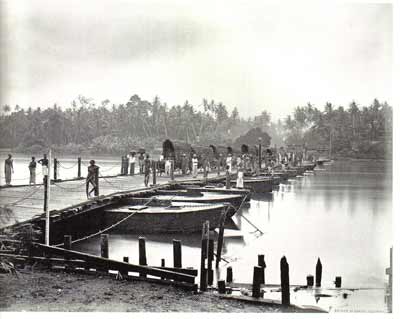Where
the first rubber seedlings were grown
 |
| Rubber trees at Henaratgoda Gardens |
Henaratgoda Gardens, the not so well known
botanical gardens in Sri Lanka due to the dominance of Peradeniya
and Hakgala Gardens, were established 130 years ago. The recorded
date is January 15, 1876.
ituated just beyond Gampaha, the Gardens
were set up for the propagation of the first para rubber seedlings
to be successfully grown outside native Brazil.
'The Handbook for the Ceylon Traveller'
describes the event thus: "The story is amongst the most
fascinating botanical true-romances – the smuggling
of the seeds down the Amazon in bales of cotton; the intensive
research for the best technique of exploiting the tree commercially;
the development of various technological uses for the product
including the rubber tyre which made the automobile industry
possible – and the sequel is more exciting still. From
these trees came the seeds dispersed throughout South-east
Asia to give a dozen countries a financial mainstay, and the
economic revolution that sprang from them broke for ever the
ruthless rule of the South American 'rubber barons' and made
of their millionaires' city, Manaos, with its marble pavements
and gold-plated WCs, a ghost town.
No.6 at Henaratgoda was the first tree to
be planted; but the most famous is No.2, which yielded 392
pounds of dry rubber in less than five years at a time when
every aspect of growing and tapping was still experimental."
The article states that there is more to
see than the rubber grove. "A plantation, for instance,
of Chaulmoogra, an ancient Eastern specific against leprosy
long disregarded by the West; a rare collection of palms;
and magnificent trees of many kinds. Trees, indeed (rather
than flowers) are the glory of Heneratgoda and the most impressive
of all are giants from the South American continent seen here
to better effect than in any of Sri Lanka's other Gardens.
They are also preserved on either side of the entrance gate,
two small patches of untouched 'jungle'; an unusually imaginative
exhibit."
Heneratgoda Gardens is well worth a visit.
You can go by train, get down at Gampaha station and do a
quiet trudge along the Minuwangoda road. By road, go along
the Colombo-Kandy road, turn off at Miriswatta junction, reach
Gampaha and proceed.
|



